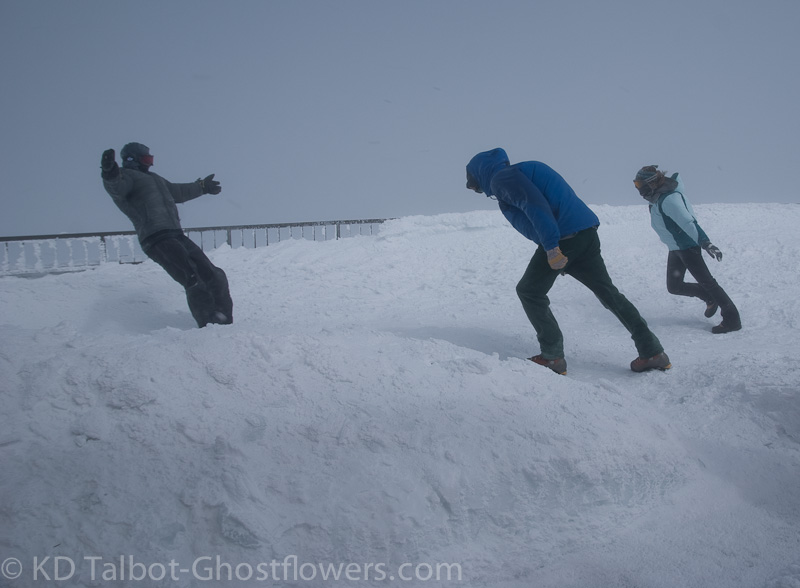As the wind increases the pressure on your body surface grows incrementally. I'm not a scientist and can't explain this phenomenon, but I'm sure there are some here who can... 8 )
Summary:
aerodynamic forces are proportional to the square of the airspeed.
Details:
q=1/2 * rho * v*v
where:
q=dynamic pressure (force/area)
rho = density of air (weight/volume)
v = velocity of air (distance/time)
(See, for instance,
http://en.wikipedia.org/wiki/Dynamic_pressure)
The total force is then:
f=S*q
where S is the effective flat-plate area of a surface.
Or if you prefer:
drag = Cd * S * q (where Cd is the coefficient of drag)
lift = Cl * S * q (where Cl is the coefficient of lift)
(Cd and Cl are generally less than 2.)
The density of air decreases with increasing altitude, temperature, and humidity so there is no single correct value for it. The effective flat-plate area of a body depends on its size, shape, and orientation to the wind. A human standing on the ground is in the boundary layer (transition zone between the ground and free air flow) so the wind speed varies across its body.
Putting in some reasonable numbers gives a dynamic pressure of 1 lb/sq_ft at a wind speed of ~20 mph. If one assumes that a human has an effective flat-plate area of ~5 sq-ft this gives the following:
20 mph ......... 5 lbs
40 mph ......... 20 lbs
60 mph ......... 45 lbs
80 mph ......... 80 lbs
100 mph ......... 125 lbs
120 mph ......... 180 lbs
231 mph ......... 670 lbs
I have read reports of people being lifted off the ground in winds ~80 mph.
For comparison, some light single-engine aircraft take off around 60 mph and some heavy multi-engine aircraft take off around 150 mph.
Doug

